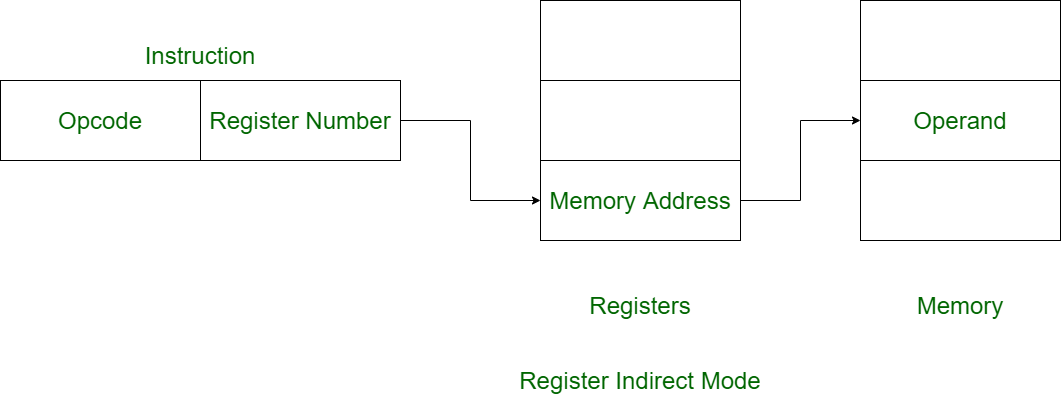先决条件 – 寻址模式
1.注册方式:
在寄存器寻址模式下,操作数放置在 8 位或 16 位通用寄存器之一中。数据位于指令指定的寄存器中。

例子:
MOV R1, R2 指令有寄存器 R2,R2 有操作数。
2.注册间接模式:
在寄存器间接寻址模式下,操作数的地址放在任一寄存器中。该指令指定一个包含操作数地址的寄存器。

例子:
ADD R1, (R2) 指令有寄存器 R2,R2 有操作数的内存地址。
寄存器模式和寄存器间接模式的区别:
| REGISTER MODE | REGISTER INDIRECT MODE |
|---|---|
| Operand is placed in general purpose register. | Operand’s offset is placed in one of the resgiters. |
| In register mode, address field contains the effective address of operand. | In register indirect mode, address field contains reference of effective address. |
| It requires only one register reference to access data. | It requires two register references to access data. |
| No further calculation is required to perform the operation. | Require further calculation to find the effective address. |
| Register addressing mode is fast. | register indirect addressing mode is slow. |
| It is easier to access the data in register mode. | It is a bit complex to access the data in register indirect mode. |
| It uses temporary variables. | It uses pointers. |